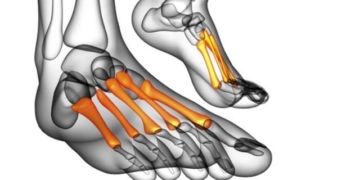Scientists Discover the Oldest Gene Set of Bacteria Related to Syphilis
In a study published in the journal Nature on January 24, scientists discovered DNA in the remains of a human skeleton over 2,000 years old in Brazil that contains Treponema pallidum endemiam, a close relative of the bacteria that causes syphilis.

The Jabuticabeira II archaeological site in Brazil, where scientists discovered the skeleton containing DNA of bacteria related to syphilis. (Photo: Jose Filippini/CNN).
Verena Schünemann, a paleogeneticist at the University of Zurich, Switzerland, and her team discovered DNA from the bacteria Treponema pallidum endeticum in the skeletons from the Jabuticabeira II archaeological site, located near Laguna do Camacho on the southern coast of Brazil.
More than 200 individuals were buried at Jabuticabeira II from 1200 BC to 400 AD. To further investigate these remains, Schünemann and her colleagues screened bone samples from 99 skeletons.
The team found 37 skeletons containing treponemal DNA. Of these, 4 DNA samples provided sufficient data for researchers to reconstruct the gene set of the pathogen.
The study suggests that the reconstructed gene set bears striking similarities to the gene set causing bejel, a disease also caused by treponemal bacteria, transmitted from person to person through contact with skin or oral lesions.
Researchers have debated the origins of syphilis, particularly following an outbreak in Europe in 1495. Some argue that the expedition of Christopher Columbus brought this disease back to Europe after his voyage to the Americas. However, recent studies indicate that syphilis was present in Europe before Columbus set sail, according to LiveScience.
Research also notes that syphilis is one of four diseases caused by related bacteria. The other three diseases caused by treponemal bacteria are bejel, pinta, and yaws, which are chronic infections and not sexually transmitted diseases.
With the study of the skeletons in Brazil, scientists have identified that the bacteria causing bejel originated over 2,000 years ago, around 780 BC to 450 AD, rather than emerging in the 15th century as previously thought.
However, Schünemann believes this study does not provide enough evidence to determine the origins of syphilis at any specific time.


















































